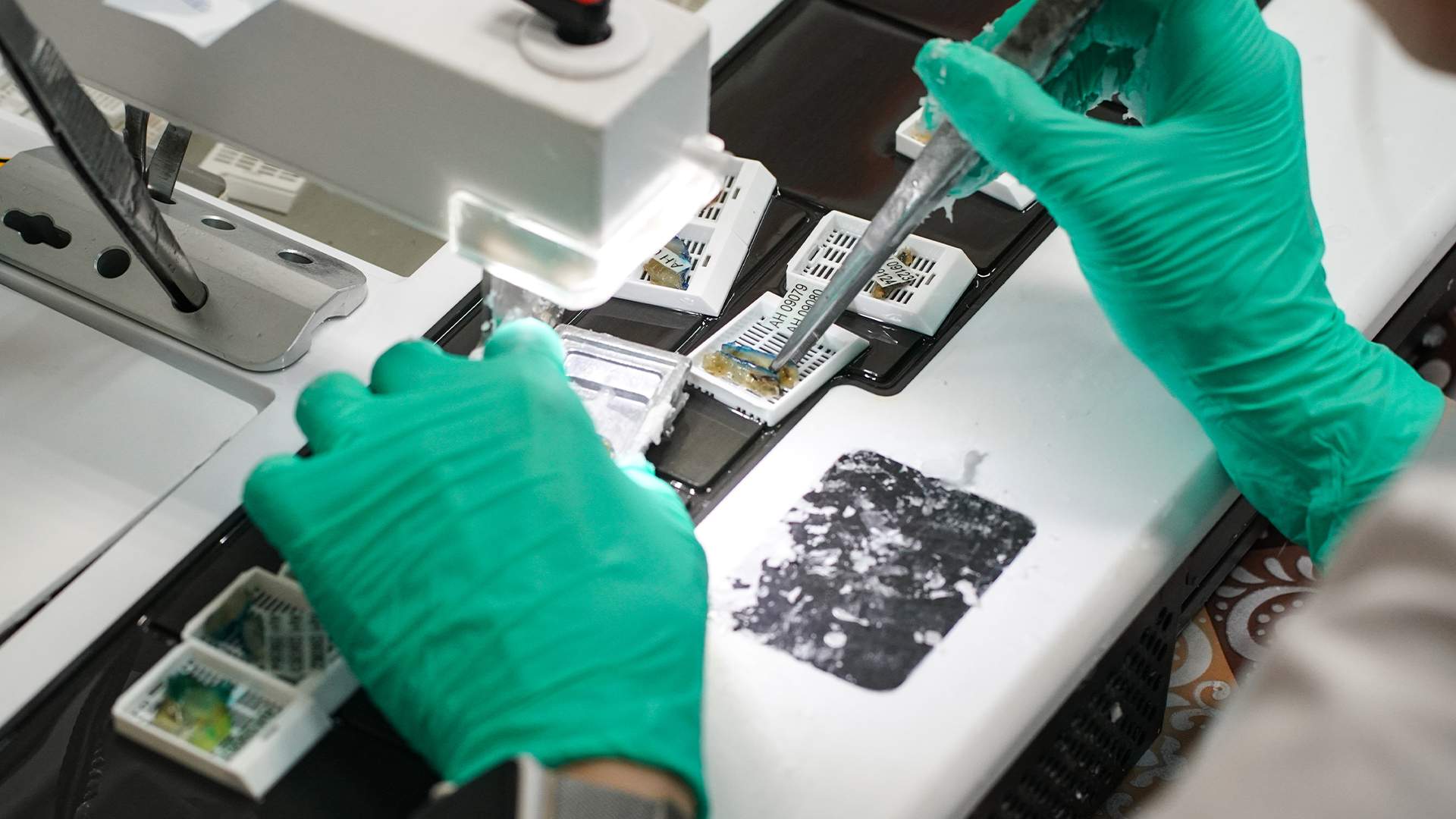- Статьи
- Science and technology
- A cancerous case: Pseudomonas aeruginosa toxins will specifically destroy diseased cells
A cancerous case: Pseudomonas aeruginosa toxins will specifically destroy diseased cells

Russian scientists have discovered a pair of molecules containing Pseudomonas aeruginosa toxins that can target cancer cells. Experiments have shown that by interacting with each other, these substances enhance each other's therapeutic effect. The molecules may become the basis for a new type of targeted treatment of tumors of the breast, stomach and other organs. According to experts, combined cancer control strategies are being actively developed all over the world. The proposed approach can be very effective, but further research is needed for more accurate estimates.
Combination cancer therapy
MIPT specialists have experimentally discovered that the combined use of two types of molecules containing Pseudomonas aeruginosa toxins effectively destroys cancer cells from breast, stomach, and some other organs. These are widespread malignancies, the markers of which are changes in the expression of HER2 and EpCAM proteins. The studied substances can have a targeted effect on diseased cells and not touch healthy ones, which makes it possible to create new medicines based on them that are convenient to manufacture and develop strategies for combined targeted therapy.
— In most studies, similar full-size antibodies are now used to recognize and target cancer cells. They work well, but they are very difficult to produce. We took a simplified version of them, the smaller molecules DARP_9.29-LoPE and DARP_EC1-LoPE. And it turned out that they work just as well and are no less specific against cancer cells," said Anastasia Obozina, a junior researcher at MIPT.
Cancer cells often develop multidrug resistance, which limits the effectiveness of monotherapy with one of the existing drugs. For this reason, combined treatment regimens are being developed with the simultaneous use of several compounds that cause various mechanisms of cell death. However, the use of two or more compounds does not always increase the therapeutic effect. On the contrary, often the simultaneous use of two molecules leads to the fact that one substance worsens the effect of the other. However, it does not bring adequate benefits in cancer therapy, so the researchers studied the complex effect of both immunotoxins on cancer cells.
The results of the experiments, which quantify the interaction of the two molecules, showed that the most promising is the use of an equal ratio of immunotoxins against tumors in whose cells there is a high expression of HER2 and moderate expression of EpCAM. This approach has led to a pronounced synergistic therapeutic effect. At the same time, cells with low HER2 levels and high EpCAM expression turned out to be less sensitive to combination therapy.
— Our results emphasize the need for a detailed study of the molecular profile of the tumor before prescribing combination therapy. Optimizing the ratio of targeted agents can significantly increase the effectiveness of therapy and minimize side effects," said Victoria Shipunova, head of the Laboratory of Biochemical Studies of Carcinogenesis at MIPT.
A promising cancer treatment method
The analysis of the molecular profile of a tumor is already widely used in clinics, so it will not be difficult to perform it to identify patients who are sensitive to the new combination therapy, the developers believe.
— Cancer therapy using immunotoxins targeting the HER2 and EpCAM membrane antigens, which are overexpressed on the surface of tumors, is certainly promising. The authors were able to show an increased effect when using two immunotoxins, which is certainly worthy of attention. One of the dangers of this approach is the summation of toxic effects in living organisms, it would be interesting to study the risks associated with this at subsequent stages of the study," said Vadim Pokrovsky, Head of the Berezov Department of Biochemistry at the Rudn University.
Oleg Kaganov, head of the Department of Oncology at SamSMU and Chief physician of the Samara Regional Clinical Oncology Dispensary, agrees that the pair of molecules discovered by scientists can become the basis for a promising type of targeted therapy.
"These experiments have shown promising results, but in order to evaluate the effectiveness of using this method for the personalized treatment of oncological diseases, additional clinical studies are required," he said.
Research on combined cancer treatment regimens is conducted by many scientific groups around the world. Combining molecular targeted therapy targeting specific tumor cell receptors with molecular profiling of tumors will significantly improve the effectiveness and selectivity of treatment. Scientists have demonstrated the importance of determining the characteristics of a tumor for choosing a combination of antitumor drugs. The results of this work will help to introduce combined personalized approaches to the treatment of oncological diseases into clinical practice, said Evgeny Guryev, Senior researcher at the Department of Biophysics at the Institute of Biology and Biomedicine at the Lobachevsky National Research University.
Переведено сервисом «Яндекс Переводчик»






